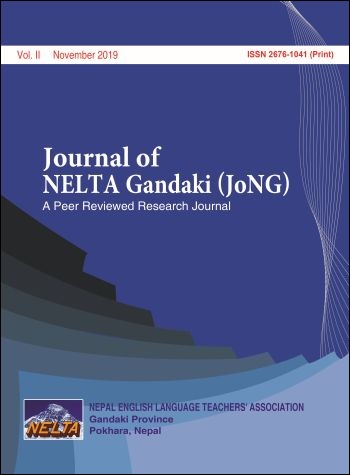Second Language Acquisition as a Discipline: A Historical Perspective
DOI:
https://doi.org/10.3126/jong.v2i0.26603Keywords:
behaviourism, error analysis, interlanguage theory, monitor model, second languageAbstract
Second language acquisition (SLA) generates and tests the theories concerning the acquisition of languages other than first language (L1) in different contexts. Even if SLA is a nascent discipline, its history is remarkable and helpful to seek the answers to the questions that researchers are raising in the field of second language or foreign language. Based on this context, this article aims to recount the history of the burgeoning discipline that heavily draws from numerous disciplines like linguistics, psychology, sociolinguistics, psycholinguistics, and so on. To achieve the objective, document analysis method has been used. The analysis and interpretation of the available documents exhibit that the traces of SLA were observed in the studies that address the issue of language transfer. Specifically, the diachronic study proves that the development of the discipline has undergone three evolving phases like background, formative, and developmental. The background phase caters for behaviourism, contrastive analysis hypothesis, and the attacks on the fundamental premises of behaviourism. The formative phase deals with Chomsky’s revolutionary steps, error analysis, interlanguane theory, morpheme order studies, and the Krashen’s monitor model that opened up the avenues for further studies of SLA. The developmental phase recounts various studies that have consolidated SLA as a separate discipline.
Downloads
Downloads
Published
How to Cite
Issue
Section
License
This license allows reusers to distribute, remix, adapt, and build upon the material in any medium or format for noncommercial purposes only, and only so long as attribution is given to the creator.




